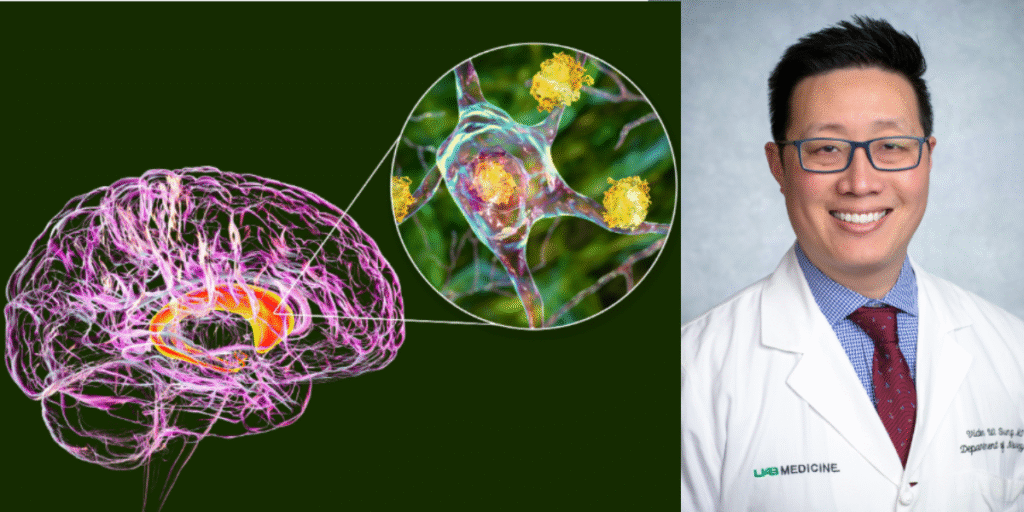Breakthrough in Huntington’s Disease Treatment
Researchers at the University of Alabama at Birmingham (UAB) have announced a significant advancement in the treatment of Huntington’s disease. They have developed a therapy that reportedly slows the disease’s progression by around 75%. This marks the first time a treatment has been effective in combating this challenging condition.
The gene therapy, referred to as AMT-130, is considered unique. In a study, seven of the 17 high-dose participants were treated at UAB. Dr. Victor Sun, who leads the Movement Disorders Division and the UAB Huntington’s Disease Clinic, described the findings as a “huge step” in addressing a disease thought to be untreatable for so long.
“Since the HD gene was sequenced over 30 years ago, we’ve been striving to slow or halt this difficult disease, and these preliminary results finally represent a significant advance in that journey,” Dr. Sun noted.
Up to this point, most treatments for Huntington’s merely alleviated symptoms rather than altering the disease’s trajectory. This UAB-led study is particularly noteworthy as it’s the first successful attempt to slow down the progression of Huntington’s disease. The research involved 29 participants diagnosed with early-stage Huntington’s, examining both low and high doses of AMT-130.
The treatment itself involves a surgical procedure lasting eight to ten hours. It functions by blocking the messenger RNA (mRNA) that contributes to the harmful huntingtin protein, which causes neurological damage in Huntington’s. Unlike some gene therapies, AMT-130 does not alter DNA, which provides a significant safety advantage.
Participants receiving the high-dose treatment experienced a markedly slower disease progression over a three-year period compared to those who were untreated. They also maintained better motor skills, cognitive functions, and daily living abilities, with no major side effects reported.
Although the procedure is invasive, it is designed to be a one-time treatment that can potentially have lasting effects, presenting a possible “one-and-done” solution. Since it doesn’t make permanent changes to DNA, it avoids many risks associated with gene editing.
“While we definitely approach these results with caution, given that they are based on a small number of patients, a 75% reduction in disease progression is significant,” Dr. Sun said. “It’s a reason for optimism.” The treatment, however, has yet to receive FDA approval, although the company uniQure is pursuing early review. If sanctioned, AMT-130 could become the first effective therapy that modifies the course of Huntington’s disease.
Dr. Sun acknowledged that obstacles still exist in making this treatment accessible, both in surgical and financial terms. However, he insisted that “any effective treatment that alters the course of Huntington’s disease is far better than having no treatment at all.”
He also highlighted the bravery of the trial participants, noting, “I think it’s essential to honor the courage of these 29 individuals, most of whom were at UAB, who underwent surgery to inject medication into their brains even before we knew if it was safe. If their bravery leads to the first FDA-approved disease-modifying therapy for Huntington’s, that would be a remarkable legacy, especially with UAB playing such a crucial role.”
For more details regarding clinical trials, UAB provides additional resources.
According to UCSF Health, Huntington’s disease (HD) is a fatal genetic condition characterized by involuntary movements, cognitive decline, and emotional disturbances. It results from the degeneration of neurons in certain brain areas, leading to uncontrollable movements and emotional instability.
This disease is inherited through a genetic mutation passed from parent to child, conferring a 50% risk to each offspring of an affected parent. If the gene isn’t inherited, children will not develop HD. Symptoms commonly appear between the ages of 30 and 55, affecting approximately 1 in 10,000 to 20,000 individuals in the U.S., occurring equally across genders and ethnic backgrounds.







